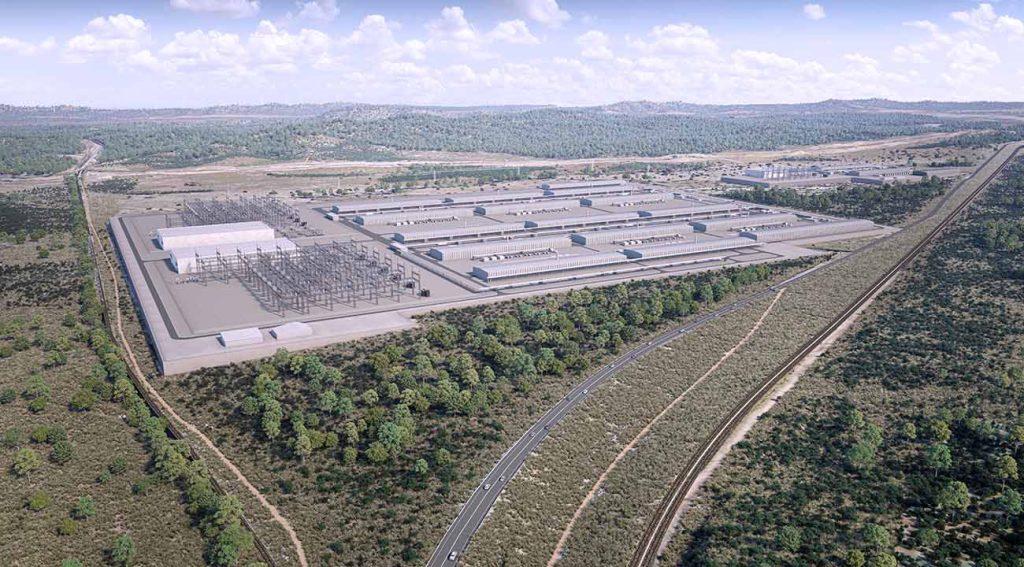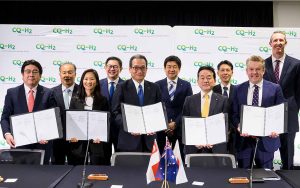Hydrogen FEED study forges ahead
A massive green hydrogen plant proposed for Gladstone in Queensland is one step closer, with Stanwell progressing to a front-end engineering and design study.

ARENA has conditionally approved $20 million funding to what could be among the world’s largest hydrogen production projects.
The funding to Stanwell Corporation Limited (Stanwell) will support a $117 million front-end engineering and design (FEED) study.
The study will finalise the development stage of the Central Queensland Hydrogen (CQ-H2) Project. The project initially plans to install up to 640 MW of electrolysers and produce up to 200 tonnes per day of gaseous renewable hydrogen. Offtakers will purchase the gas to convert to renewable ammonia or liquified hydrogen.
Commercial operations are expected to start in 2028. If successful, the project will ramp up in 200 tonnes-per-day increments. Full-scale operation would see 2,240 MW electrolysers producing 800 tonnes per day of gaseous renewable hydrogen by 2031.
In the fast-moving environment of renewable hydrogen development, it’s difficult to talk categorically about the relative size of new projects around the world, but by comparison, Australia’s largest hydrogen production facility to date to have reached a similar FEED development stage is the proposed 500MW electrolyser on Gibson Island in Brisbane.
But whereas the Gibson Island project, which is being developed by Fortescue Future Industries, is designed to feed an existing, co-located ammonia production facility owned by Incitec Pivot, the CQ-H2 Project will primarily focus on export markets.
The role of nearby Port of Gladstone, Australia’s fourth largest port, is also part of the study. The project proposes a hydrogen liquefaction facility there producing 400 tonnes per day for export by the end of 2030.
Stanwell and a number of consortium members completed a project feasibility study in June 2022. ARENA part-funded that study with $2.16 million out of a total cost of $10.4 million.
Among its conclusions, the study said: “Gladstone provides the ideal location for developing a liquefied hydrogen export project.”
Where are the export markets?

The study identified four key Asian markets for hydrogen as an energy source: Japan, Republic of Korea, China and Singapore.
The Port of Gladstone is able to supply all four markets by sea.
ARENA CEO Darren Miller says Australia is well positioned to capitalise on export opportunities to Asia. However, it will require rapid development of substantial hydrogen production and export facilities at a globally competitive price point.
“Stanwell’s project represents a near-term green hydrogen production opportunity at globally significant scale,” Mr Miller said.
“The development of a renewable hydrogen hub in Gladstone could help decarbonise heavy industrial facilities in the region and create export supply chains.”
ARENA’s commitment to hydrogen
Stanwell’s Gladstone project builds upon ARENA’s existing portfolio in renewable hydrogen. ARENA has previously provided $236 million to 43 projects aimed at green hydrogen for transport, industry, gas blending and export. Projects have ranged from early-stage research to the first 10MW electrolysers.
In 2023, ARENA has already launched two separate $25 million research and development (R&D) funding rounds. It has also joined forces with the German government to provide a combined $110 million in conditional funding for four joint projects, primarily based in Australia under the HyGATE funding initiative.
The Government in its 2023 Federal Budget, tasked ARENA with helping develop its newly founded $2 billion Hydrogen Headstart initiative. The revenue support program aims to scale up green hydrogen production and position Australia as an early mover and global leader.
The program will likely support two to three of the biggest hydrogen projects yet built and operated in Australia. The Government envisages these flagship projects could deliver up to a gigawatt of electrolyser capacity by as early as 2030.
ARENA will design the program in consultation with Department of Climate Change Energy Environment and Water (DCCEEW), Australian industry and communities.
Scaling up production
Mr Miller said Stanwell’s FEED study would provide important information for Australia’s green hydrogen producers.
“We’re looking to gain valuable learnings around the current cost of producing hydrogen from renewable energy at large scale.”
“This understanding is critical to scaling up hydrogen production in Australia and developing both the domestic and export industry for green hydrogen in line with Australia’s ambitions,” he said.
Stanwell CEO Michael O’Rourke said: “We are immensely grateful for the continued support ARENA has provided to the CQ-H2 Project.”
“Their support has been instrumental in getting us to this important point, and this funding will be a vital foundation for the next steps of this journey.”
The FEED study is expected to complete by mid-2024. At its peak, the CQ-H2 Project would create an estimated 8,900 jobs.
LIKE THIS STORY? SIGN UP TO OUR NEWSLETTER

ARENA